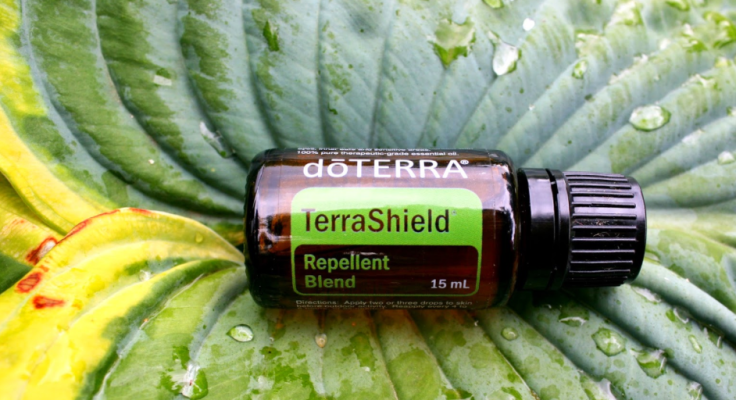This is the second article in a four-part series on tick safety and Lyme disease. To read the first article, click here. Please read, share, and DO THIS; it could save your life.
In the classic movie Jurassic Park, after watching a newborn velociraptor hatch and learning that the dinosaurs in the park are kept from breeding by denying them the chromosome required to create a male, the character Dr. Ian Malcolm, full of skepticism and awe, asserts, “Life will find a way.”
Lately, here in the real world, it feels a little like nature is finding a way…..to annihilate the human race. Mosquitos have ascended on and condemned Brazil, making athletes and fans apprehensive about attending the 2016 Summer Olympics. After all, is it worth possibly contracting the terrifying Zika virus?
Another new disease, called Powassan virus, found in New England, is like Lyme disease, but more extreme. Doctors believe it’s transmitted from ticks faster and most people cannot recover from it. For example, Lyn Snow was bitten by a tick two years ago. She had symptoms similar to Lyme disease. But quickly, her headaches turned into hallucinations. Her brain was swelling. Within one week, she was in a vegetative state.
Bailee Wennihan, born in Kansas City, Missouri, struggled for five years to find a diagnosis while diseases and treatments caused damage to her body. Wennihan first started to exhibit symptoms, including headaches, body aches and fever, after returning from a church camp in Tarkio, Missouri, in 2009 at age 13. By the time she was officially diagnosed with West Nile and Lyme disease, Wennihan had damage to her hips and knees and had two strokes. In April 2014, Wennihan was en route to St. Joseph to address kidney issues when her heart stopped. She was revived and put on life support, where she stayed for three months. Following a seven-year battle, beautiful, vivacious Bailee Wennihan passed away at the age of twenty.

“It’s not a crime not to know everything and not have all the answers,” her grandmother Teena Marks said. “It’s a crime not to try to get them. … Keep pressing for more education or someone else like Bailee will slip through the cracks.”
The bottom line is nature is finding a way, and we are not fighting back hard enough or smart enough.
It starts with me and it starts with you.
Do you know what steps to take to protect yourself and your family from ticks and other disease-carrying insects?? Do you use insect repellent? If so, does it contain harmful chemicals, like DEET? Did you know there are natural ways to protect your yard?
Please keep reading.
How to Protect Your Body
There are two main repellents that are recommended and are the only chemicals approved for use –Deet and Permethrin. When used together, they provide nearly 100% protection from ticks, mosquitoes, chiggers, fleas and other marauding insects.
Deet: Deet repellents work by evaporation, creating a shield a few inches above the area of application. The presence of the repellent vapor confuses insects so they can’t locate a target host. In most cases it usually requires less than 1% of the repellent to form this protective barrier. It is the combination of this “evaporation delivery system,” and the base repellent you choose that determines how much repellent you must apply.
Permethrin: Although known as a repellent, permethrin is actually a contact insecticide. That is, it kills ticks or other insects that come in contact with it. Permethrin is considered ideal because it is applied to clothing, gear, mosquito nets and bedding and is not applied directly on the body. When applied to clothing and equipment, permethrin is very effective at reducing the mosquito population in your campsite or sleeping quarters by killing mosquitoes that “hang around” camp and land on things. Where ticks are a concern, permethrin on clothing or gear will kill ticks that travel across as little as 10″ of treated fabric. Spray applications of permethrin remain effective up several weeks and through weekly washings. Dip applications can remain effective even longer. Permethrin is harmless to skin and is used extensively in other formulas for treatment of head lice.

Essential Oils: Natural alternatives for pest relief are in great demand. Essential oils are a popular choice, and some can repel ticks even if they don’t them. In 2004, Swedish researchers Gardulf, Wohlfart and Gustafson found that the mosquito repellent Citriodiol lessened tick attacks on people by 34 percent. The essential oils most commonly promoted as tick repellents include clove, eucalyptus, lavender, lemongrass, rosemary, thyme, and sweet myrrh. The CDC recently admitted that the essential oil lemon eucalyptus has been proven as effective as DEET, without the harmful chemical side effects. Rose geranium is another oil with remarkable effectiveness, particularly with ticks.
In fact, I make my own tick repellant now. (Obviously, I didn’t make it BEFORE I got Lyme or I certainly wouldn’t have this blog!) It’s super easy to prepare. Purchase a four oz. glass spray bottle available here at Amazon. Combine 20 drops each of lemon eucalyptus, rose geranium, and DoTerra TerraShield, which contains a mix of powerful essential oils and other plant oils known to provide outdoor protection. Top off with water. Shake before each use. This stuff really works! The only downside to natural repellents is that they must be reapplied more often and are not waterproof. Still, for us, playing in the yard, walking to the mailbox, hiking in the woods, it works! If you’d like to order bottles of this pre-made tick and insect repellent, Attack-a-Tick, email me at jena.whiston@gmail.com. Or if you have any questions about the recipe, shoot me an email.
It’s also important to apply your insect repellent the correct way. Check out this video at PestWorld for step by step instructions.
If you’re going to be spending time in wooded areas or tall grasses, wear long pants, long-sleeved shirts and closed-toe shoes. Wearing light-colored clothing will make it easier to spot ticks. When hiking, do your best to stay in the center of trails, away from vegetation where ticks may be hiding and waiting to hitch a ride.
How to Protect Your Yard
Identify tick habitats around your home. Deer ticks require a damp, humid environment to survive. Ticks are usually found:
- In wooded areas and forest edges. These areas are the most common deer tick habitat.
- Leaf litter. Humid conditions found under leaf litter provide an ideal living environment for ticks.
- Overgrown fields. These areas provide an ideal habitat for both ticks and their hosts.
- Watch out for mulch…new mulch can introduce ticks onto your property!
- Modify your environment by cutting lawns and removing leaf litter.
- Keep children’s play areas away from wooded edges and tall grass. Deer ticks will not thrive in sunlit areas.
Make your yard less tick friendly by doing the following:
- Clean up your yard and keep the lawn mowed.
- Let the sunshine in. Sunny areas are less apt to harbor ticks.
- Keep children’s play areas away from the wooded edge.
- Remove leaf litter and brush from your property and perimeter.
- Move bird feeders and wood piles away from your home.
- Don’t forget about your pets. Consider a fenced-in area, run or invisible fence to keep pets away from tick habitat. Be sure to use tick repellent for pets. (Also, there is a Lyme vaccination available for dogs. Talk with your vet to see if it’s right for you.)
- Keep wood chips in your outside dogs bedding area. Ticks hate cedar. Lining your yard with cedar chips will serve as an outstanding boundary.
An unusual, new option to research and look into is Tick Tubes. Damminix Tick Tubes® reduce the risk of Lyme Disease by using mice as “couriers” to kill disease carrying deer ticks. This interesting solution consists of small tubes filled with cotton balls. The cotton is treated the mild insecticide Permethrin. To use it, simply place Damminix Tick Tubes® in areas around your yard where mice frolic. That’s it. Mice will do the rest for you by gathering the cotton to build nests in their burrows. Young ticks feeding on the mice are killed by the insecticide before they can spread Lyme Disease to you, your family and your pets. Each mouse nesting with Damminix Tick Tubes® can kill hundreds of ticks each season. Studies have shown that Damminix Tick Tubes® actually reduces the risk of exposure to an infected tick by up to 97% on a treated property.
Certain animals naturally eat deer ticks. Deer ticks used to be found primarily in wooded areas of the northern United States, but the tiny bugs and the diseases they transmit are now in every state in the country. If you want to protect your yard from deer ticks, there are animals that can help you win the fight against them. Read this article and see if this might be a viable option for you. In addition, wild animals are also helping us fight back. Did you know the opossum eats 5,000 ticks per season?

Finally, there are specific plants that serve as deterrents. Strategically growing rosemary, chrysanthemums, fleabane daisy, mint, lemongrass, sage, and/or lavender are great plants to have in the garden, around the patio, or along the porch. Read more at One Green Planet. Plant any of these pest repelling plants (or a combination of) in pots to enjoy an insect-free patio or take indoors. Another useful way to keep plant leaves and flowers is to dry them, then crush them into small tabletop containers, or hang them intact around the house for pest protection with a pleasant scent all day long.
As you can see, there are numerous ways to keep you and your family safe.
You do not have to be a victim.
But what if, even after all these precautions, you find a deer tick embedded in your daughter’s skin? What do you do?
Learn more in the next article in this series — “Be Reactive.”
